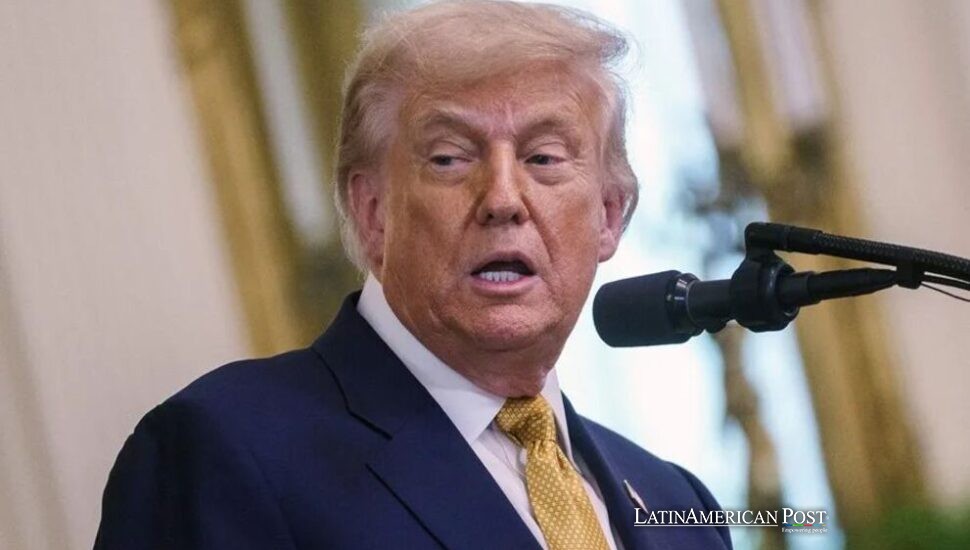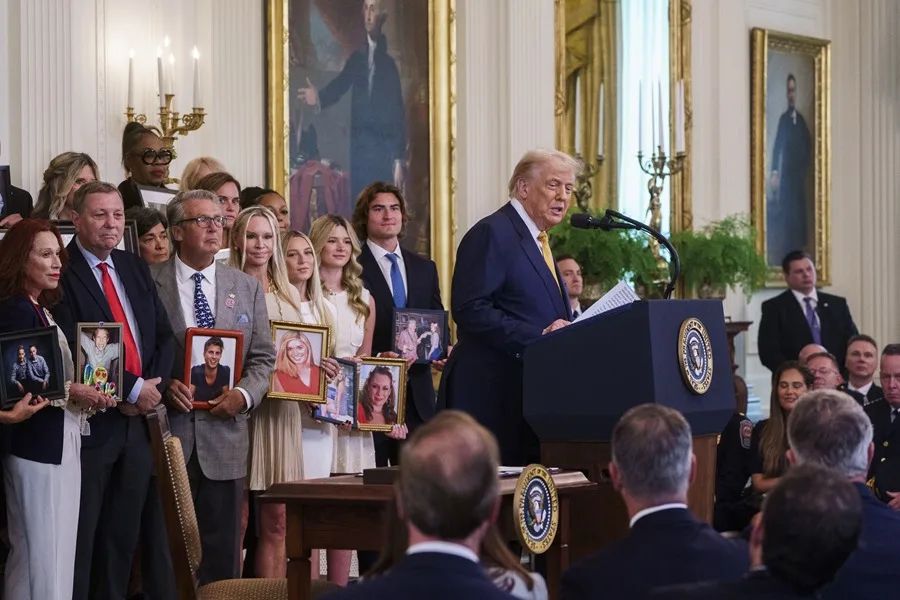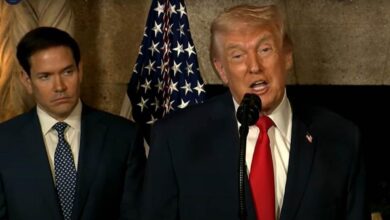Trump vs. the Cartels | As the U.S. Tightens Its Grip on Fentanyl, Mexico Bristles—and the Crisis Only Grows More Complicated

In a charged White House address, Donald Trump blamed Mexican cartels for flooding U.S. streets with fentanyl, calling for tougher laws, international pressure, and even China’s death penalty. But the more Washington shouts, the more tangled the fight becomes.
Cartel Control and the Politics of Fear
On July 16, 2025, President Donald Trump stood before a somber crowd of lawmakers and grieving families, brandishing a familiar target: Mexico’s drug cartels.
“The cartels have strong control over Mexico,” he declared. “They dominate politicians and terrorize civilians.” As relatives of overdose victims held up photos, Trump promised bold action—more sanctions, stiffer laws, and a continued push to label cartel networks as foreign terrorist organizations.
This wasn’t new ground. But the tone was different—sharper, more personal, delivered with the kind of anger that signals policy is about to harden.
Trump’s strategy hinges on one narrative: that Mexico is paralyzed by organized crime, unable or unwilling to rein in the cartels. “Their government is petrified,” he said. “They’re afraid to act.”
To some in Mexico, the accusation feels like déjà vu—an echo of earlier threats to impose trade tariffs or send in U.S. troops. To others, it’s a dangerous oversimplification of a complex, shared crisis.
Still, Trump’s approach resonates with many Americans devastated by fentanyl—a drug now responsible for the majority of overdose deaths in the U.S. His message is clear: if Mexico can’t control the cartels, the U.S. will act alone.
But acting alone comes with risks. For every hardline speech, there’s a reality on the ground that refuses to be bullied into submission.
Political Unity, Legal Ironies
Hours before blasting Mexico, Trump signed a bipartisan law increasing prison terms for anyone convicted of distributing fentanyl or its analogs on U.S. soil. The legislation sailed through Congress, one of the rare moments of agreement between Democrats and Republicans in a hyperpolarized era.
The new law is popular—it feels like doing something in the face of grief. But critics point out the contradiction: low-level dealers face life-changing sentences while international supply chains go largely untouched.
The bulk of fentanyl precursors still originate from chemical manufacturers in China, shipped to Mexico, synthesized into pills or powder in clandestine labs, and smuggled into the U.S. by the ton.
At the same time, diplomatic tensions escalated. In an unrelated legal exchange, a U.S. defense attorney representing Ovidio Guzmán, son of El Chapo, accused Mexico’s government of acting as “the public relations arm of a narco organization.” Mexican President Claudia Sheinbaum fired back, calling the remark “an insult to the presidency,” and vowed to sue for defamation.
The irony is bitter: Washington accuses Mexico of surrendering to cartels, while Mexican officials accuse the U.S. of overstepping and scapegoating. On both sides, the war of words does little to slow the drug trade—or bring justice to those caught in its path.
An Appeal to Beijing, and a Question of Leverage
Then came Trump’s boldest proposal of the day: that China impose the death penalty for manufacturers of fentanyl precursors.
“I believe we will get China to impose the death penalty,” he said, flanked by families whose children died from overdoses. “And I believe that will happen soon.”
It was a startling request. No U.S. president had previously called for another country to change its criminal code in response to American drug deaths.
On paper, the logic is simple: cut the supply at its root. But in practice, it’s a diplomatic minefield. Experts doubt Beijing will respond favorably to public pressure, especially in a year already charged with trade friction and strategic rivalry.
Even if China complies, enforcement would be difficult. The precursor market is fluid, digital, and adaptable. Cartels simply change chemical formulas to stay ahead of law enforcement.
What’s more, the cartels have mastered distribution. They hide fentanyl in food shipments, mix it with cocaine and heroin, or press it into counterfeit prescription pills. Once in the U.S., it moves faster than any government can trace.
So while Trump’s death-penalty appeal may thrill some voters, others ask: is it diplomacy—or theater?

EFE
A Crisis That Outpaces the Headlines
Beneath the noise, fentanyl keeps killing.
Last year, 80,400 Americans died of overdoses, nearly 60 percent from fentanyl, according to federal data. That’s a decline from the 2023 peak, but it’s still staggering.
What makes fentanyl so deadly? It’s cheap to produce, easy to smuggle, and fatal in doses smaller than a grain of rice. It’s mixed into heroin, cocaine, and even ADHD pills, often without the user’s knowledge.
The roots of this epidemic run deep. In the 1990s and early 2000s, pharmaceutical companies flooded the U.S. market with opioids, downplaying their addictive potential. As those drugs were pulled back, users turned to heroin—and then to fentanyl, which offered a cheaper, stronger high.
Community groups have stepped up. In cities from Philadelphia to Denver, volunteers run needle exchanges, distribute naloxone, and train peers in overdose response. These interventions save lives—but they can’t stop the flood alone.
Mexican officials argue that unless the U.S. pairs border control with addiction treatment and public health funding, nothing will change. Washington, they say, keeps blaming supply while ignoring demand.
Trump, however, shows no sign of shifting focus. His base wants action, and he’s delivering it—with sharp words, harder laws, and international pressure.
Whether that pressure leads to meaningful cooperation or just deeper standoffs remains to be seen.
In the meantime, families keep grieving. Courts keep sentencing. And fentanyl keeps moving.
At La Guardia, a suitcase gets flagged. In Phoenix, a high school mourns a student who took a counterfeit pill. In Sinaloa, a cartel chemist modifies a recipe to stay ahead of detection.
The cycle spins on. The question now—amid loud protests and quiet deaths—is whether shouting louder will finally make it stop.
Also Read: Between Safety and Silence, El Salvador Weighs the True Cost of Bukele’s Crackdown
Credits: Reporting and interviews by EFE; overdose data from the CDC and federal health agencies; legal analysis from El Colegio de la Frontera Norte; expert commentary from María de Lourdes Alfaro (University of Arizona); context from public statements by President Donald Trump and President Claudia Sheinbaum.




